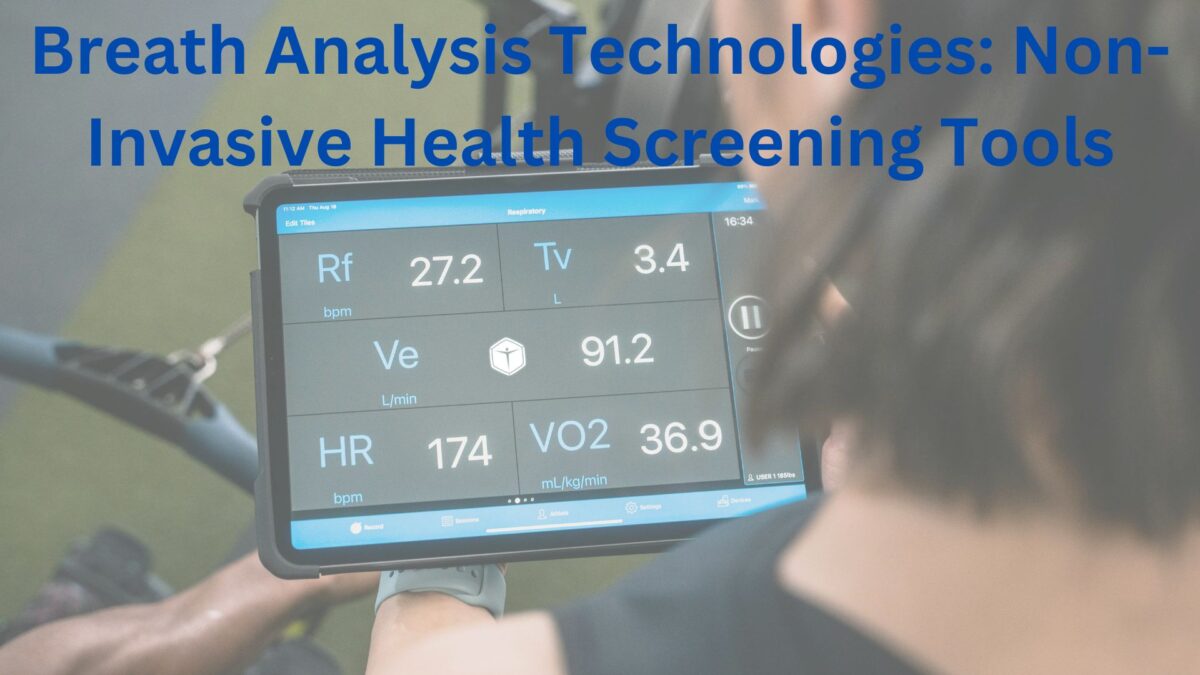Breath analysis technologies are becoming popular as non-invasive tools for personal health screening by detecting volatile organic compound (VOC) biomarkers. These devices examine exhaled breath to pinpoint biomarkers linked to different diseases, providing opportunities for early diagnosis, patient stratification, treatment monitoring, and measuring exposure to harmful substances.
Handheld Breath Collection Devices
Handheld breath collection devices are designed to effectively identify disease biomarkers related to conditions like asthma, lung cancer, and diabetes. These devices gather and separate the gas and liquid phases of breath. By cooling the water vapor in the exhaled breath, moisture is removed from the gas phase, and each phase is directed to specific collection ports. The samples are subsequently analyzed using gas or liquid chromatography to detect biomarkers. This approach enables accurate analysis of the components in exhaled breath.
Smart Masks
Smart masks combine microfluidic and cooling technologies to continuously gather and analyze exhaled breath condensate. These innovative masks offer valuable insights into health issues such as Chronic Obstructive Pulmonary Disease (COPD), asthma, and COVID-19. They feature nanoengineered electrochemical sensor arrays that track biomarkers like nitrite, ammonia, and pH levels in real-time. The information is sent wirelessly to a mobile app, allowing for ongoing monitoring and immediate health assessments.
Electronic Noses (eNose)
Electronic noses, also known as eNose technology, are engineered for high sensitivity, quick response times, and real-time breath analysis monitoring. These devices utilize gas sensors along with pattern recognition algorithms to identify and analyze the components present in exhaled breath. They hold significant promise for detecting lung cancer with both high sensitivity and specificity. eNose technology provides a non-invasive and effective approach to breath diagnosis.
Breath Biopsy
The breath biopsy platform gathers and examines breath samples to pinpoint VOC biomarkers. It acts as a non-invasive screening method for early diagnosis and ongoing monitoring. The Breath Biopsy Collection Station offers a controlled supply of filtered air and employs a ReCIVA device to capture breath fractions linked to air from deeper in the lungs. This approach optimizes the collection of biologically significant VOCs, improving the precision of the analysis.
Wearable Breath Sensors
Wearable breath sensors are devices that find health indicators in your breath by measuring things like how you breathe, the temperature, and the moisture in your breath. These sensors are included in wearable gadgets such as bracelets or patches, which allow you to monitor your health continuously throughout the day. They’re convenient and make it easier to keep track of your health, making them really useful for regular health checks. By giving you constant updates, these sensors help you watch your health in a simple and comfortable way.
Advantages of Breath Analysis
Breath testing offers a simple and non-invasive method for health checks, avoiding the need for blood draws or uncomfortable procedures, which makes it more patient-friendly. By detecting changes in breath markers, diseases can be identified at a very early stage, often before any symptoms appear, allowing for more effective treatment and better chances of recovery. Breath contains numerous volatile organic compounds (VOCs) that are valuable for health analysis.
Examining both gas and liquid samples gives doctors a clearer understanding of the body’s condition. Wearable sensors and smart masks facilitate continuous, real-time health monitoring, enabling immediate adjustments to treatment plans when necessary. With miniaturized devices and wearable technology, breath testing becomes portable and can be integrated into daily routines. This allows for regular health monitoring outside of clinical settings, providing individuals with more flexibility in managing their health.
Applications
Breath analysis has the potential to detect biomarkers associated with a range of diseases, such as cancers, respiratory issues, metabolic disorders, and infections. This approach allows for early and non-invasive diagnoses.
By categorizing patients according to their specific characteristics and tracking how they respond to treatments, breath analysis paves the way for personalized medicine, which customizes treatment plans to fit each individual, making them more effective. Moreover, this method can help gauge exposure to harmful substances and evaluate their effects on the body, proving essential in fields like occupational health and environmental monitoring. Additionally, the technology has applications in veterinary medicine, enabling non-invasive health assessments of animals, thus eliminating the need for invasive methods.
While conventional breath sampling methods offer high sensitivity and specificity, they can be costly and complex, limiting their use to clinical settings. Recent developments in wearable and portable technologies are addressing these limitations, promising to revolutionize disease detection and broaden healthcare applications
Key Takeaways
Breath analysis technologies are changing personal health care by providing non-invasive ways to detect health issues. By examining volatile organic compounds (VOCs) in our breath in real-time, these technologies help with early disease detection, creating personalized treatments, and supporting ongoing health monitoring. Different devices, such as handheld tools, smart masks, electronic noses, and wearable sensors, make breath analysis easy to use and widely accessible. This suggests that routine breath checks could become a normal part of health care. These advancements are also valuable in veterinary medicine, offering insights into animal health. As these portable and wearable devices continue to improve, breath analysis is poised to revolutionize how we detect diseases and manage healthcare, making it more effective, accessible, and tailored to each individual’s needs.
Reach out to us at open-innovator@quotients.com or drop us a line to delve into the transformative potential of this groundbreaking technology. We’d love to explore the possibilities with you.






